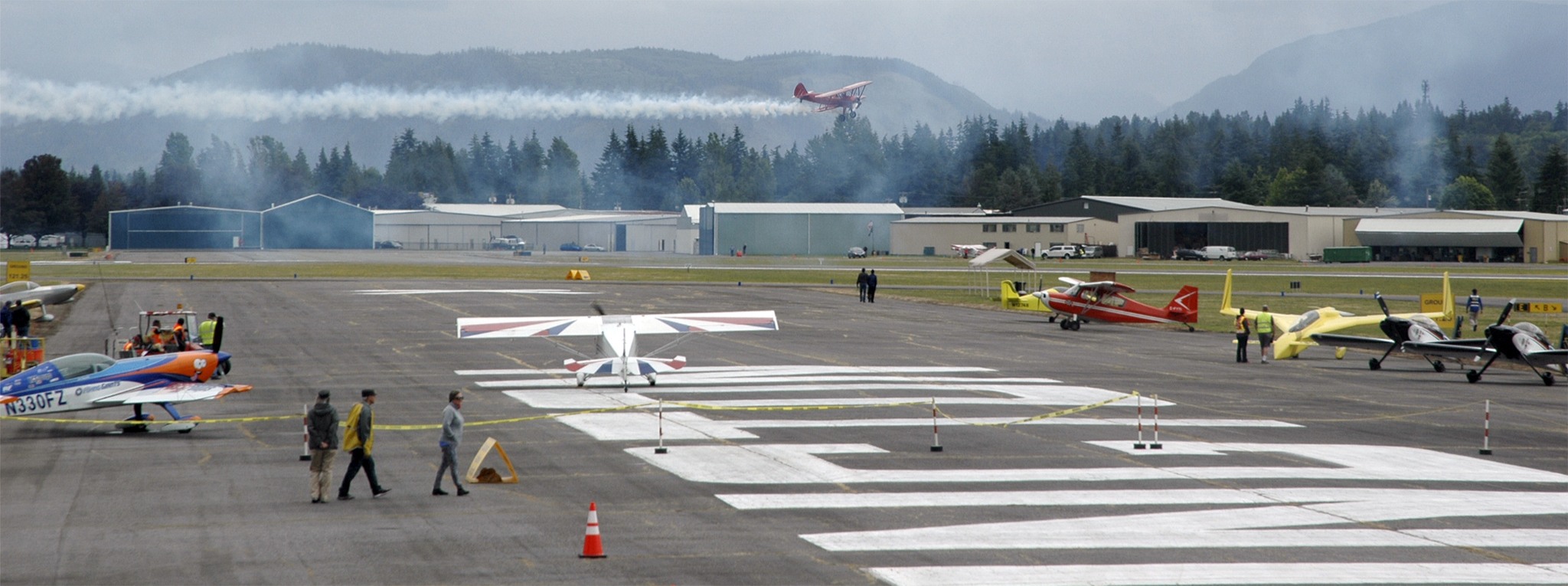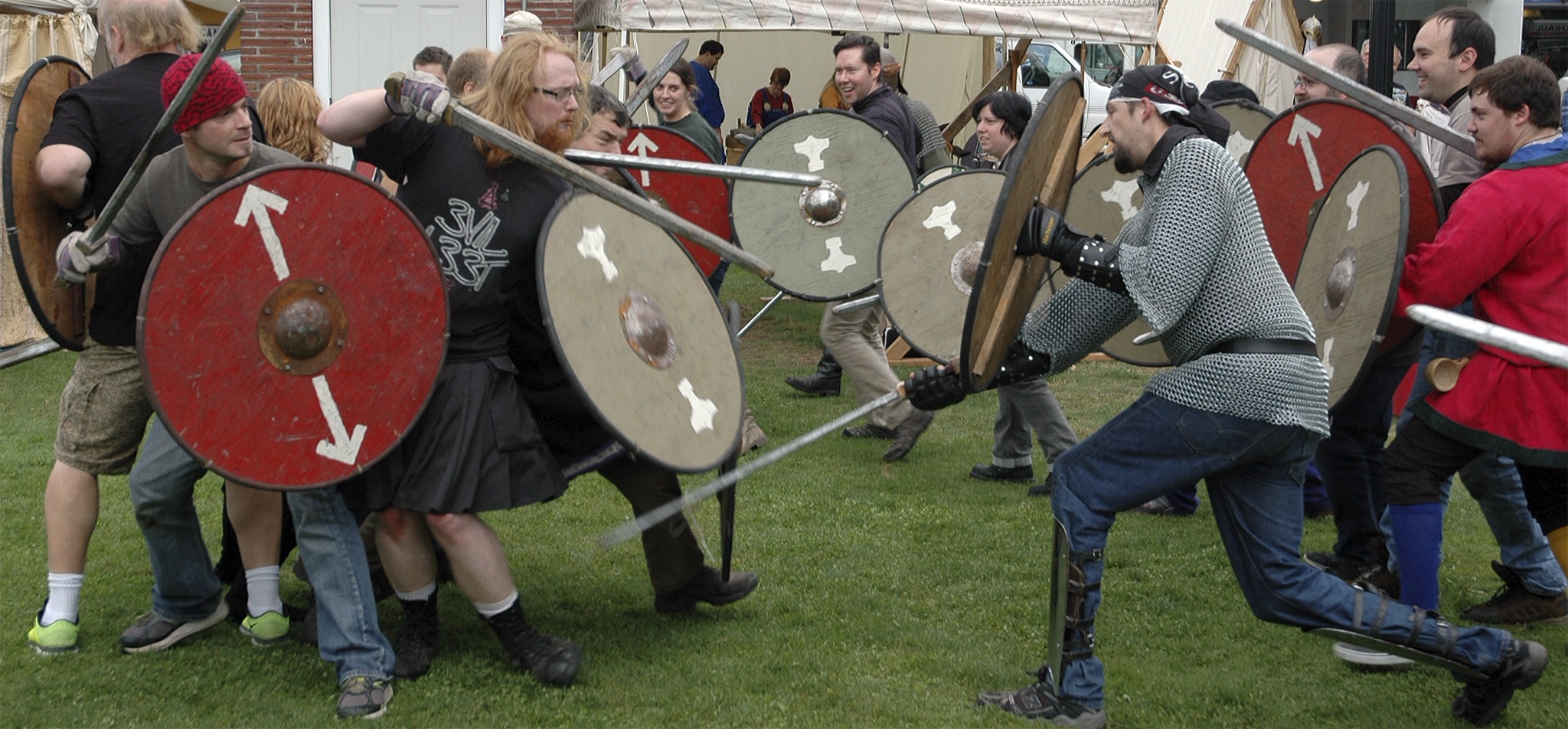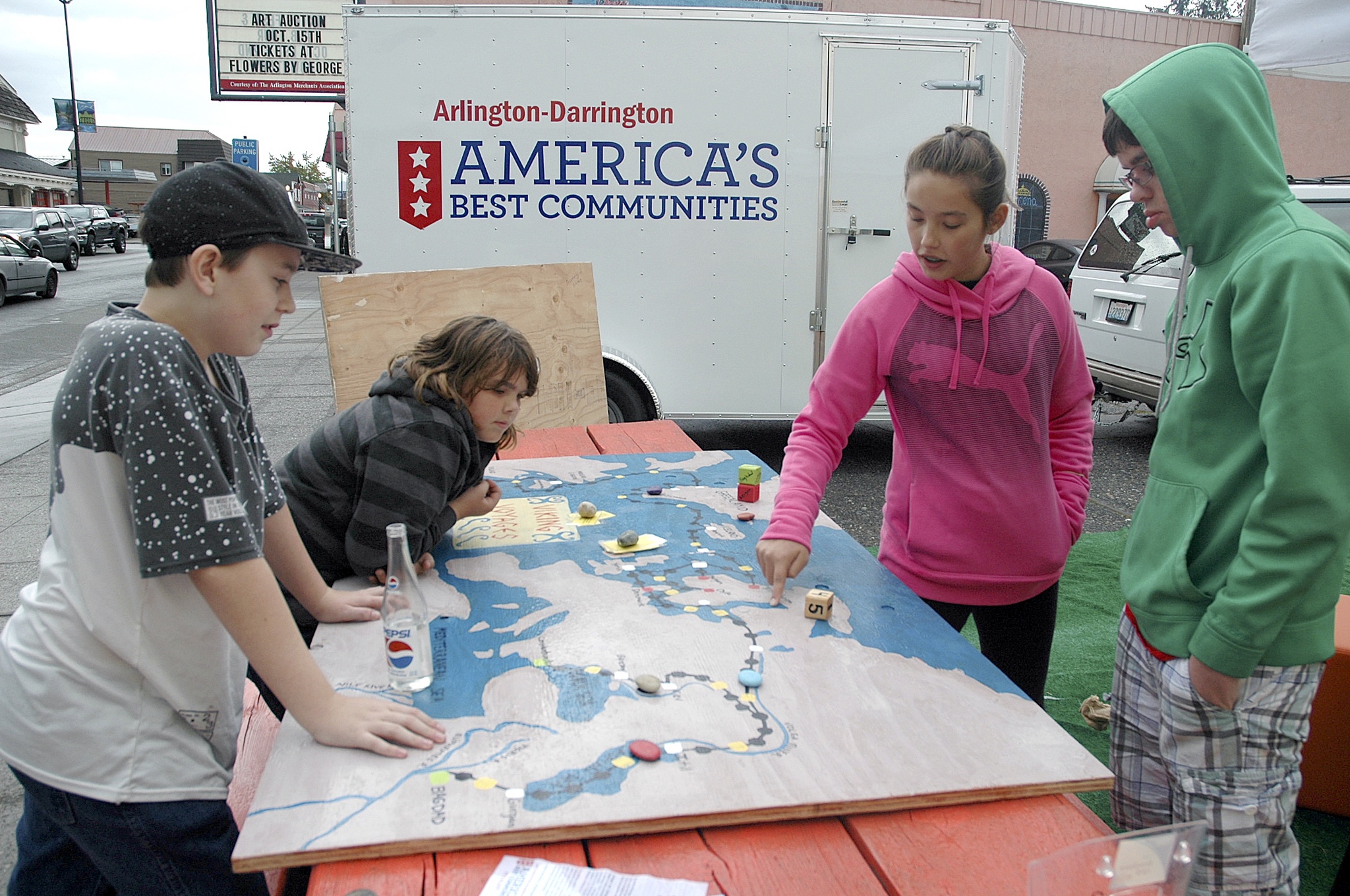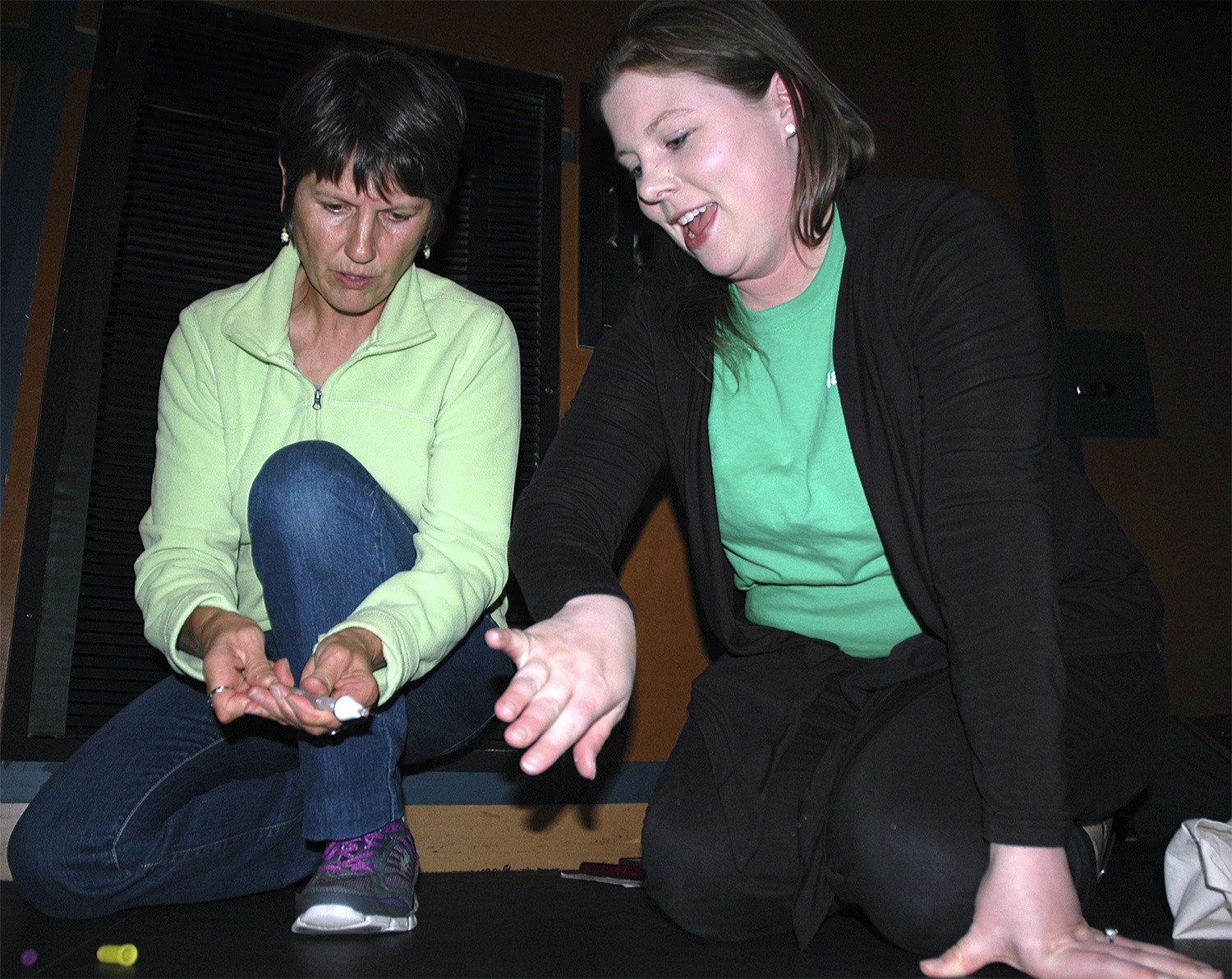ARLINGTON — A new layout for the 48th annual Fly-In at the Arlington Airport meant those who entered from the west July 7 were greeted by an assortment of military vehicles and weapons, along with a band of Russian soldiers who looked like they’d stepped out of the last century.
Amid the big rigs brought by the Army Reserve, National Guard and a slew of independent military historians was a group of World War II reenactors dressed in the uniforms of the Soviet Union, one of whom was born in Russia near the end of the Cold War.
Nikolay Chapurin, 42, came to America in 1998, when his wife’s uncle invited him to a family reunion. Before that, he served in the Ukrainian military’s air defense, although he hastened to add that such service is compulsory.
“When I came to America and talked to people here who had grown up in the same years I had, I decided that America and Russia’s propaganda must have been written by the same office,” laughed Chapurin, who serves as the “authenticity officer” for his fellow reenactors, making sure their uniforms and equipment are up to military standards and in keeping with the period.
Eddie Forcier is American, but his interest in antique Russian military rifles led him to study the country’s military history. Like Chapurin, he was struck by how much Russia’s role in bringing Hitler to heel is overlooked in U.S. history books.
“We were never taught about their sacrifice in the classes I had as a kid,” Forcier said.
Next to the military area was a tent of light sport and ultralight aircraft, courtesy of Doug Maas, president of Six Chuter International Powered Parachutes, who was joined by Mark Martin of NW Light Sport Training in Arlington.
“We’re an entryway into a niche market,” Maas said. “The people who come to us either always wanted to be pilots, but don’t have the financial means to learn through general aviation, or they’re older folks, like me, who used to be pilots, but want to get back into flying without the hassle of the FAA’s medical requirements.”
To that end, Maas boasted that flight training for an ultralight license can be completed within a three-day weekend for about $3,000.
“It’s much more social than fixed-wing flying,” Maas said. “We fly to destinations together, camp out in the same fields and share barbecue meals. It’s a very family oriented form of aviation.”
Indeed, Martin became a pilot trainer in 2010, after his stepfather decided he wanted to take up flying. While his step-dad decided flying wasn’t for him, Martin figured out that the best way to help someone learn to fly was to become an instructor. He encourages those who are curious about ultralight flying to take a 15- or 30-minute test-flight with him.
“It’s a low, slow way of flying,” Martin said. “You can cruise at thirty miles an hour, like a motorcycle, only you’re a thousand feet above ground. You get to see the ground, and spot the cows and the bald eagles. It’s a more easygoing way of life.”
Martin pointed that even if you do stall out, your aircraft is designed to be a motorized skydiver, “so you’re already coasting down on your parachute.”
Jennifer Roberson’s two kids — Zoie, 4, and Luke, 2 — got a taste of the piloting experience through flight simulators.
“It’s our first time at the Fly-In,” said Roberson, who brought the family from Oak Harbor. “I heard about it on Facebook, and I thought it looked super-cool. All the military vehicles and guns are really neat.”
A few displays away, Snohomish County’s Experimental Aircraft Association Chapter 84 was represented by a trio of personal aircraft builders, whose future planes were on site, in parts, for visitors to study.
“We’re the buildingest chapter in the Northwest,” said Nick Gentry, treasurer and historian for the chapter. “Our intention is to get young kids interested in planes, so we can recruit the next generation of pilots.”
Fellow member Tom Williams explained that putting their projects on display helps educate the public about building a plane.
“When they see the completed planes, they don’t know how everything goes together,” Williams said.
Member Mark Morse added: “If they think to themselves, ‘These are just regular guys, so I can build a plane too,’ then we’ve succeeded.”
Closer to the runway, Mark Peterson took to the microphone and told the crowds to get ready for that afternoon’s air show, starting with Vicky Benzing piloting her 1940 Boeing Stearman.
Peterson, who’s served as an announcer at the Fly-In for 30 years, dropped trivia about all the pilots slated to fly Thursday, from Jim Burke’s passion for radio-controlled planes, to Will Allen’s ability to sing live from his cockpit “while he’s pulling negative-Gs.”
“When Doctor D flies his T-Cart, he turns the engine off, and we turn the sound system off, so you can hear the wind whistling through the struts of the plane,” Peterson said. “If nothing else, it proves that you won’t fall straight out of the sky just because the engine is shut off.”
Peterson noted that, between constantly checking their air speed, altitude, location and radio communications, “it gets complex up there.”
“The aerobatics that are demonstrated here each year constitute an artistic skill,” Peterson said. “This is one of the few places left where you can get up-and-personal with the pilots and their planes. It allows you to experience the world of flight in a whole new way, and the Arlington Fly-In is known nationwide for both its safety and its friendliness.”
He added: “And to think, it all started with a stopover for a spaghetti feed, forty-eight years ago.”







